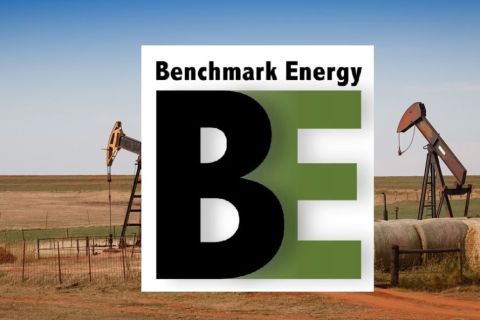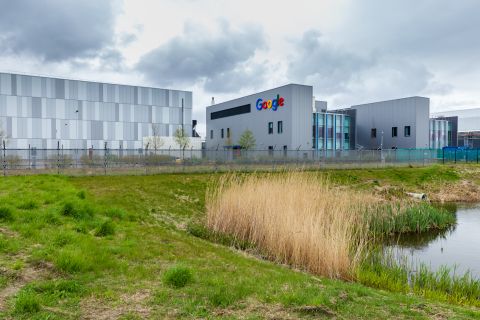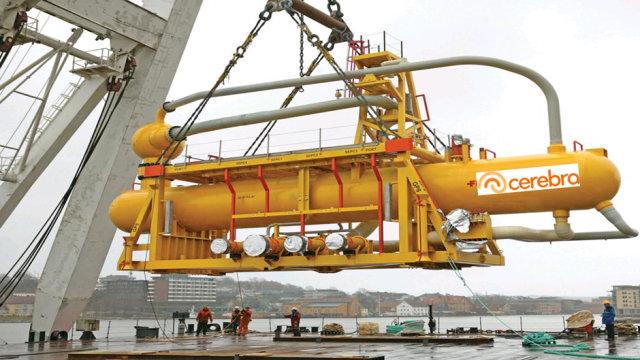
An operator digitized sensor data and integrated physics-based models with statistical data-driven models to predict risk of failure. (Source: Flutura Decision Sciences and Analytics)
A confluence of groundbreaking technologies bundled with next-generation business models is poised to transform the oil and gas industry. It’s history in the making. This convergence of digital technologies (the Industrial Internet of Things, artificial intelligence [AI], autonomous self-healing assets, drones, etc.) is creating entirely new ways of operating a producing well and massively transforming outcomes like increasing production and decreasing nonproductive time (NPT). It’s interesting to view some real-world examples of transformations that are solving real-world problems, and the takeaways are five lessons learned in the execution process.
Predicting fracture pump failures
Flutura worked with one of the world’s largest original equipment manufacturers (OEMs) of fracture pumps. Fracture pumps are used in harsh conditions, and as a manufacturer the drilling service providers and owner/ operators expect the OEMs to have an intimate understanding of the current health of the fracture pump and the potential ways it could succumb to a fault mode. To make this transition from the electromechanical world to the digital world, the customer created a digital twin of the fracture pump, including its various sub-systems (pumps, engine, transmission, etc.), sensor signals (engine rpm, transmission oil pressure), trips, alarms and fault modes on Cerebra. Once the digital twin was created, a “digital umbilical cord” was created using Cerebra’s algorithmic state assessment module providing remote digital diagnostics for the pump and predicting potential failure modes with associated confidence for the field force to automatically create tickets. This, in addition to reducing downtime of nodal assets in the field, created a new predictable recurrent revenue pool for the customer through its “digital health monitoring as a service” offering.
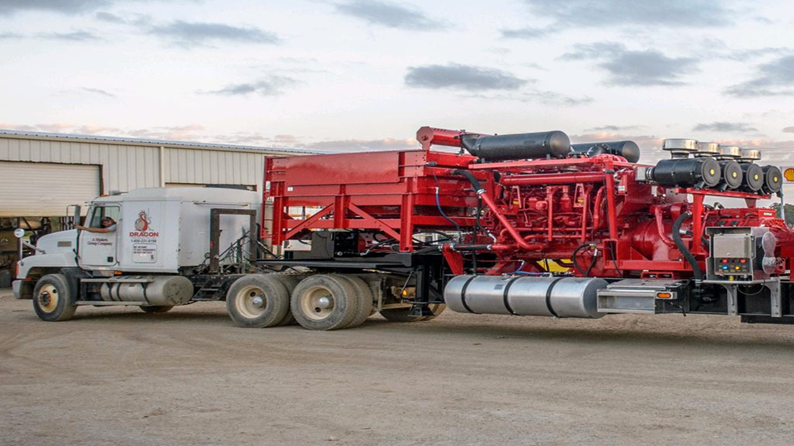
AI in FLNG carriers
A major global LNG carrier approached Flutura with an operational problem to solve. Floating LNG carriers are used to ship LNG from point to point. This is a complex and delicate process since gas is stored at -162 C (-260 F) for ease of transport, which takes up about 1/600th the volume of natural gas in its gaseous state. There is a lot of cryogenic and leakage risk associated with this process. The global carrier wanted an “edge solution” completely self-contained on the ship to diagnose and predict risky outcomes. It created a digital twin of the LNG carrier using Cerebra modules, and the solution’s advanced deep-learning neural networks detected temperature and leakage anomalies that human eyes could not detect in an unsupervised fashion.
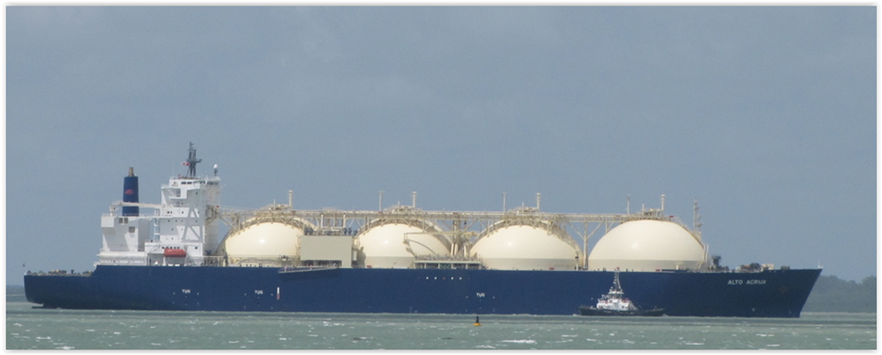
AI in subsea separators
Subsea separators increase the oil recovery rate by separating a well stream into gaseous and liquid components. As oil production and recovery rates are directly correlated to separator performance and health, their importance to monitor the health in real time and proactively predict potential failure modes enter the radar. This industrial OEM was trying to solve three problems using digital platforms:
- Remotely diagnosing the digital health of subsea separators;
- Reducing NPT by having a prognosis for the failure modes; and
- Reducing high operational costs associated with expensive unwanted trips to the rig.
The operator digitized sensor data from inlet pressure, choke pressure, flow rates (gas, oil and water) and differential pressures/fluid levels. It also integrated its physics-based models with statistical data-driven models to predict risk of failure.
What has been learned?
Mindsets eclipse toolsets. The race to digital transformation in operating wells is not just about digital toolsets. It’s about changing mindsets in ways that are new. The veterans of the oil and gas industry have become accustomed to tangibile and reliabile outcomes. Digital is intangible and iterative as the AI algorithms learn and adapt. This requires executives to think about operations differently and reimagine the way they view upstream operations.
Converting outputs to outcomes. Digital involves executing a great deal of physics and math-based models on sensor streams. These digital outputs then need to be translated into a meaningful operational outcome, like increasing first-time resolution of upstream assets and reducing NPT, which are then mapped to dollars realized. Data need to be converted to dollars.
Sensor lakes. One of the foundational pieces for digital transformation is having a critical mass of labeled fault mode data. This creates a trail of “digital bread crumbs” and leaves a marker on the asset time line, indicating how the machine specifically failed. This information is guzzled by the deep neural network to discover weights to be attached to minimize prediction deviation. Examples of labeled fault data include electric motor failure, hydraulic leakage and stick-shift events.
Intelligent industrial diagnostic “bot” assistance. As the experienced workforce retires, it is important to codify that knowledge for the future workforce. Industrial bot assistants can codify frontline experience and head office intelligence into a comprehensive diagnostic template and make it accessible via “don’t make me think” voice interaction instead of complex dashboard interaction. For example, Flutura created an “Ask Cerebra” diagnostic bot for catwalks that helped a large OEM frontline team step through a diagnostic workflow to understand fault modes codified from years of experience. With the advent of natural language processing algorithms powered by deep learning, field technicians can interact with the asset diagnostic applications through voice interactions, just as bots help in customer service.
Integrate heart and mind. Digital transformation is a complex process requiring tact in dealing with sensitive human issues in a complex ecosystem. This has required seasoned leadership that can understand the transformative potential of digital technologies but can also provide a human-centric approach to solving problems.
These are deep digital shifts that have reached an inflection point, creating a massive transformation of oil and gas operations to move beyond “vanilla” condition-monitoring systems. The challenges are more human than technological. They require oil and gas leadership to rethink operating models, business models and economic models. And this requires them to create a blueprint to respond to these tectonic irreversible shifts and to think that the status quo is not an option as the digital wave seeps into the electromechanical world.
Recommended Reading
Exclusive: Mitsubishi Power Plans Hydrogen for the Long Haul
2024-04-17 - Mitsubishi Power is looking at a "realistic timeline" as the company scales projects centered around the "versatile molecule," Kai Guo, the vice president of hydrogen infrastructure development for Mitsubishi Power, told Hart Energy's Jordan Blum at CERAWeek by S&P Global.
Benchmark Closes Anadarko Deal, Hunts for More M&A
2024-04-17 - Benchmark Energy II closed a $145 million acquisition of western Anadarko Basin assets—and the company is hunting for more low-decline, mature assets to acquire.
US Orders Most Companies to Wind Down Operations in Venezuela by May
2024-04-17 - The U.S. Office of Foreign Assets Control issued a new license related to Venezuela that gives companies until the end of May to wind down operations following a lack of progress on national elections.
Google Exec: More Collaboration Needed for Clean Power
2024-04-17 - Tech giant Google has partnered with its peers and several renewable energy companies, including startups, to ramp up the presence of renewables on the grid.
PGS, TGS Merger Clears Norwegian Authorities, UK Still Reviewing
2024-04-17 - Energy data companies PGS and TGS said their merger has received approval by Norwegian authorities and remains under review by the U.K. Competition Market Authority.


